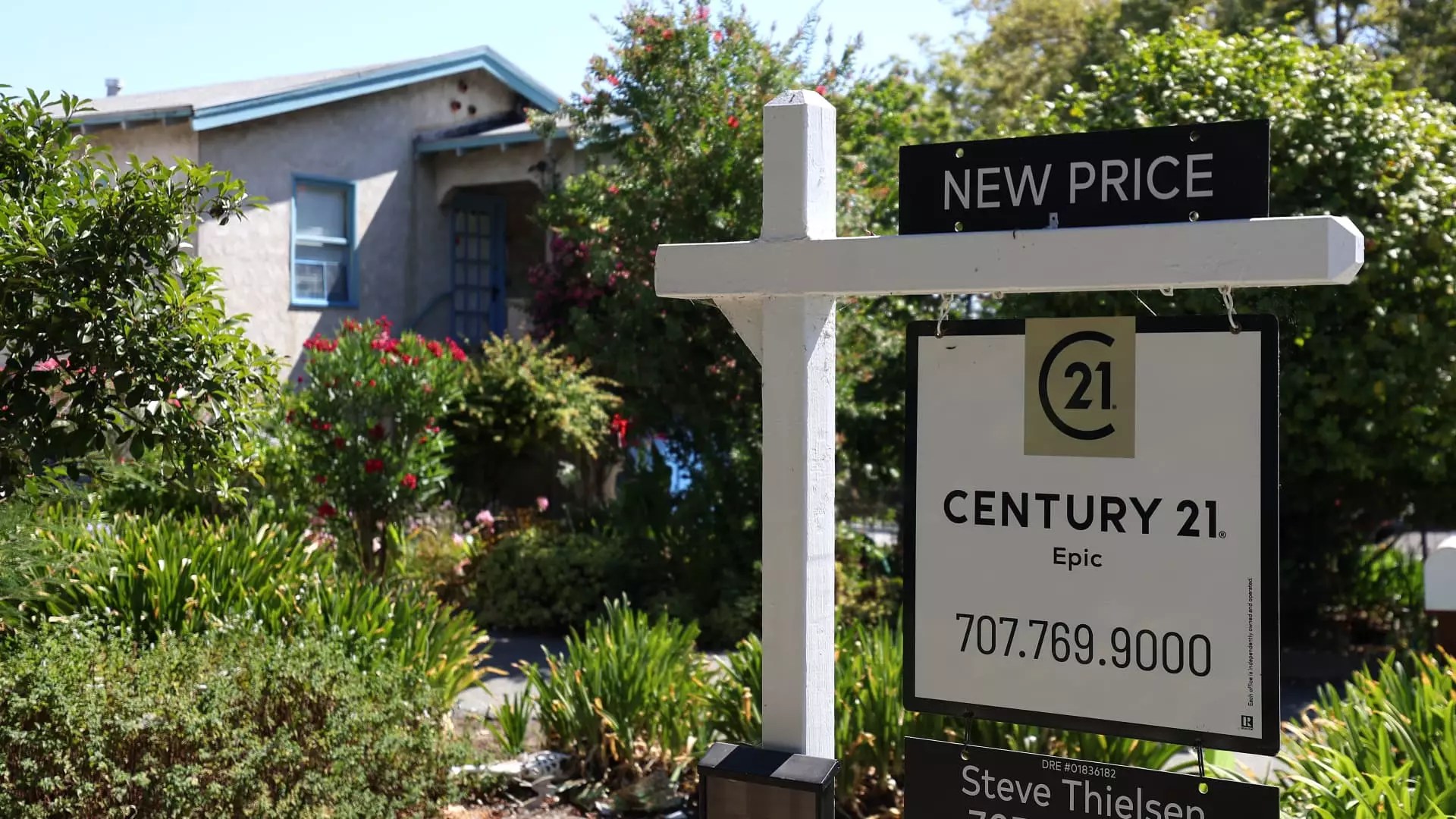In recent weeks, the mortgage market has experienced a significant uptick in interest rates, marking the third consecutive increase. As a result, rates have reached their highest point since August, generating a palpable shift in the behavior of both homeowners refinancing their mortgages and potential homebuyers. The Mortgage Bankers Association reported staggering statistics, indicating an overall decline in mortgage application volume by 17% compared to the previous week. Such data highlights a broader trend where borrowers are increasingly hesitant to engage in the housing market under the shadow of rising costs.
The average interest rate on 30-year fixed-rate mortgages has climbed to 6.52%, a notable increase from 6.36%. The effect is further exacerbated by the rising points on loans, which have gone from 0.62 to 0.65. This increase is particularly detrimental to refinancing opportunities, evidenced by the 26% drop in refinance applications week over week. However, it’s worth mentioning that despite this decline, year-on-year results show a stark improvement; refinance activity remains 111% higher than the same time last year. The difference in interest rates could present a valuable opportunity for homeowners who purchased within the last year, potentially allowing them to capitalize on better refinancing options.
Market Demand Shows Signs of Strain
The latest figures also reveal a drop in mortgage applications for home purchases, which fell by 7%, even though the year-over-year numbers reflect a slight increase of 7%. This inconsistency illustrates how rising rates can stifle demand, creating a more competitive landscape for potential buyers. Nevertheless, proponents for first-time homebuyers note that demand is still somewhat resilient. FHA loan applications show only slight changes, suggesting that newcomers to the market might still have the resolve to navigate these challenging conditions. This sentiment is partially fueled by the improving inventory, which offers potential buyers increased choices in a marketplace that has been historically tight.
While the rise in mortgage rates plays a significant role in shaping consumer behavior, many potential buyers may be pivoting their focus to broader economic concerns rather than just interest rates. Indicator trends suggest that some are postponing their purchasing decisions until after the November elections, indicating a wait-and-see approach to an uncertain economic landscape. This hesitance aligns with sentiments shared by economists who argue that current financial conditions, encompassing everything from inflation to job growth, will likely dictate future changes in the housing market.
The mortgage landscape is experiencing pivotal changes as interest rates ascend, affecting both refinancing endeavors and home purchase applications. As prospective buyers weigh their options amid economic unpredictability, the dynamics suggest a critical juncture in the market that could define how the housing sector evolves over the coming months. Mortgage rates may stabilize in the near future, but the decision-making process for many will undoubtedly hinge on both economic factors and personal financial situations.


Leave a Reply